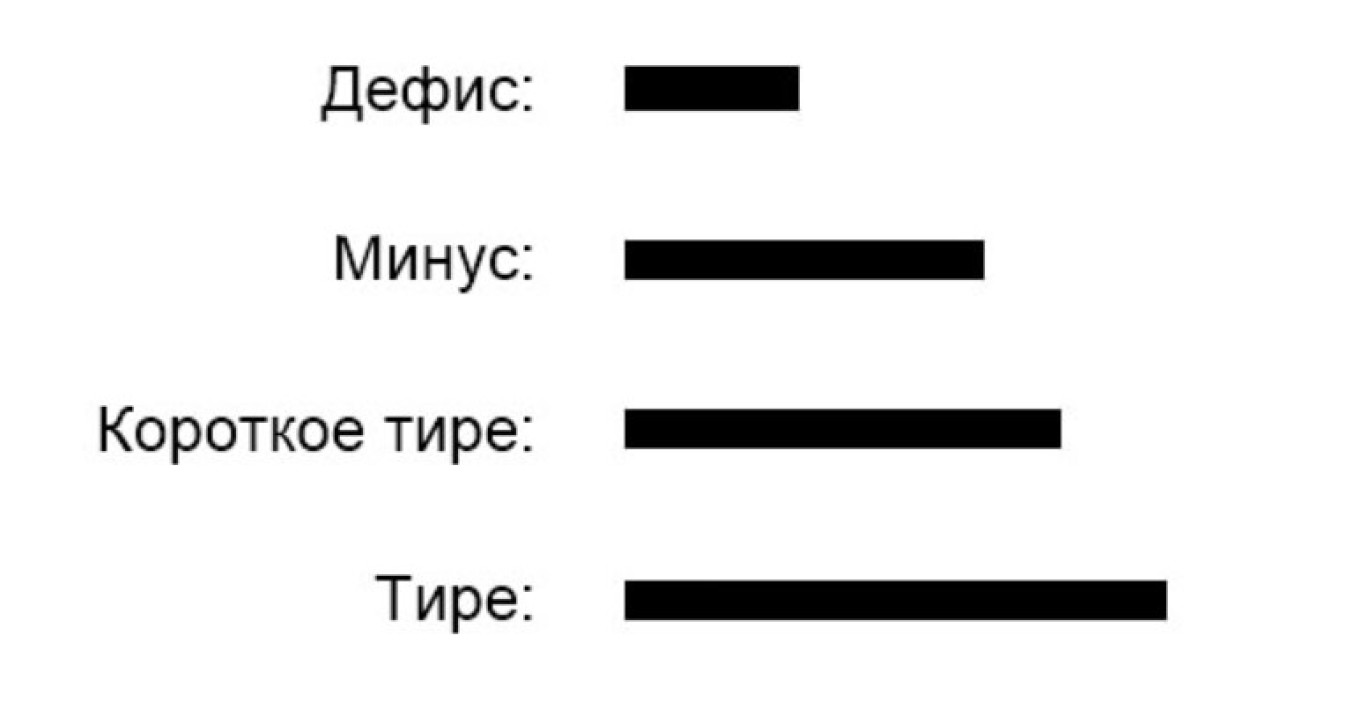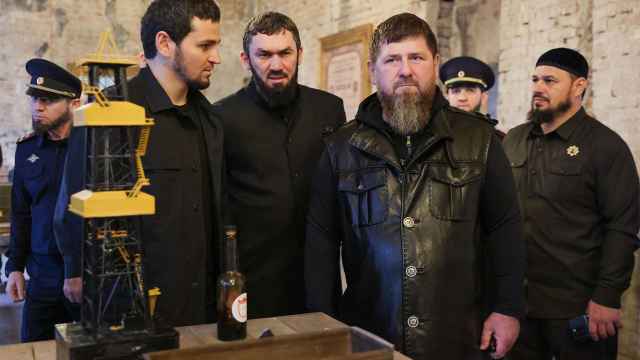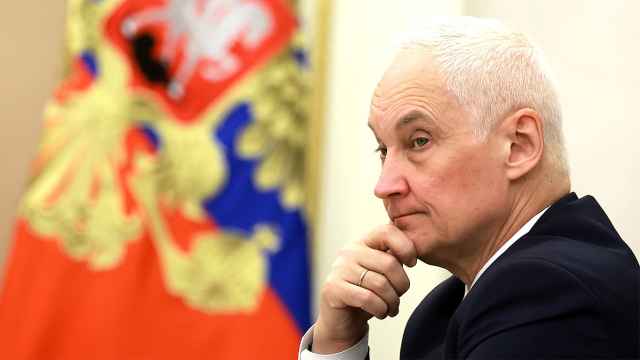@: собака (dog)
Today I have a very exciting topic: Russian punctuation and typographical marks. No, really! Don’t you want to know why @ is a собака (dog) in Russian and what you call those claw-like Russian quotation marks? Haven’t you asked yourself if дефис the same thing as тире? And surely you have pondered the question of why oh why Russians love многоточие (ellipsis) so much?
But first, a bit of history.
In the old, old, old days, before book printing came to Russia, manuscripts were written by hand without any punctuation at all. In fact, there were no capitalized words and — wait for it — no spaces between words. Imagine reading a book that looked like this: япошелвмагазинивернусьчерезчас
The first mark of punctuation was a cross + used to mark the spot where a monk paused when he was copying a holy text. Its original purpose was to protect the text from unholy powers creeping in. Later the cross as a sign of pausing or stopping was transformed into the first punctuation marks — точка (period) and запятая (comma).
And while we’re here, why does the Russian word for a comma appear to be a feminine adjective? What is the noun it’s modifying? Actually, it’s a noun that was originally the passive participle of the verb запяти (hold up, detain).
Now you know.
Things got exciting in the Russian punctuation world as soon as book printing appeared in the 16th century. By the 18th century Russian had pretty much its full supply of punctuation marks, called знаки препинания. Препинание is an obstacle or impediment — because these are marks that stop or impede the flow of words, that is, that punctuate the text. Пунктуация is the word that describes the whole system.
Now there are ten знаки препинания: точка (period); запятая (comma); точка с запятой (semi-colon, literally dot/period with comma); двоеточие (colon, literally two dots/periods); многоточие (ellipsis, literally many dots/periods); восклицательный знак (exclamation mark); вопросительный знак (question mark); тире (dash); скобки (parentheses); and кавычки (quotation marks).
Why isn’t дефис on the list? Дефис, from the Latin divisio (division) is a hyphen, that very short little line called an intra-word dash used to break a word between syllables at the end of a line or to separate the parts of a compound word like Ростов-на-Дону (Rostov-on-Don) or что-нибудь (something). Дефис is commonly called чёрточка (little line). It’s also called символ or знак переноса (hyphenation symbol or sign) or знак разбивки (sign of division).
Using дефис properly is a big problem not only for us foreigners but for native speakers, too, which is why you can find a gazillion books and sites called Слитно или раздельно? (Together or separate — that is: One word or two?)
Тире (dash) is from the French noun tiret, which in turn is from the verb tirer (to pull). It was introduced into Russian by the historian and writer Nikolai Karamzin and comes in two lengths: короткое or среднее тире (en-dash) and длинное тире (em-dash).

Многоточие (ellipsis) is colloquially called троеточие (literally “three dots/periods”). It is properly многоточие because it refers to all ellipses, and in other countries the number of periods vary. In Chinese, for example, an ellipsis has six dots. The other reason is that in printing the dots in многоточие are smaller and take up less space than typing three periods.
Многоточия are used in Russian like in English: to show an omission in a sentence — Пушкин писал: «А поэзия… должна быть глуповата» (Pushkin wrote, “But poetry… should be a little stupid.”) — or to show a pause in thinking, change of thought, or indicate something unsaid.
In my experience as a translator, they are used much more in Russian than in English. Often the “change of thought” ellipsis in Russian would be a period or semi-colon in English. And the ellipses drifting off at the end of Russian sentences sometimes seem precious or overly emotional in English. Vladimir Nabokov wrote: Многоточие означает, должно быть, следы на цыпочках ушедших слов (An ellipsis represents, I would say, the tip-toe trace of words after they’re gone.) That’s lovely, but in the hands of a lesser writer, those prints can seem more like a pile of wadded up tissues and lots of dramatic sighs.
The bane of my existence as an editor is кавычки (quotation marks). If you work, as I do, between Russian, American and British English, your entire work life consists of adding or taking away the number of quotation marks, changing their style, and moving them inside and outside periods. The world would be a far better place if we all just agreed on one way to indicate direct speech.
But until that happens, it is nice to know that Russian quotation marks are called ёлочки (literally, herringbones), and English quotations mark are called английские двойные или одиночные кавычки (English double or single quotation marks) or sometimes лапки (small paws). In handwritten texts Russians put the opening quotation marks at the bottom of the word and the closing at the top like this: „Добрый день“ These are called немецкие лапки (German small paws).
And speaking of paws: собака or собачка (dog, little dog) is the Russian name for the typographical sign @ used in emails. The sign itself had been used in English for many years as the “commercial at” in statements like, “I want to buy 10 bottles of wine @ $5.00/bottle.” The story goes that in 1971 a computer engineer by the name Ray Tomlinson working in Cambridge, Massachusetts developed an office messaging system and used @ (at) to identify the recipient. In English speakers continue to call it “at” — my address is mary at gmail dot com — but in other countries people devised a term that described the sign visually. Around the world it is a snail, a puppy, a worm, a monkey, a pig’s tail, a mouse, a sweet bun, a rollmop herring (bless the Czechs and Slovaks), and a bent, crooked or crazy A.
In Russia it had several names when it appeared, such as лягушка (frog), ухо (ear) or закорючка (doodle) but over time in that mysterious way of language, собака — the image of a little dog with a curled tail — stuck and spread throughout the country. When you dictate your Russian email address, you say маша собака джи-мейл точка ком.
So now you know.
A Message from The Moscow Times:
Dear readers,
We are facing unprecedented challenges. Russia's Prosecutor General's Office has designated The Moscow Times as an "undesirable" organization, criminalizing our work and putting our staff at risk of prosecution. This follows our earlier unjust labeling as a "foreign agent."
These actions are direct attempts to silence independent journalism in Russia. The authorities claim our work "discredits the decisions of the Russian leadership." We see things differently: we strive to provide accurate, unbiased reporting on Russia.
We, the journalists of The Moscow Times, refuse to be silenced. But to continue our work, we need your help.
Your support, no matter how small, makes a world of difference. If you can, please support us monthly starting from just $2. It's quick to set up, and every contribution makes a significant impact.
By supporting The Moscow Times, you're defending open, independent journalism in the face of repression. Thank you for standing with us.
Remind me later.






